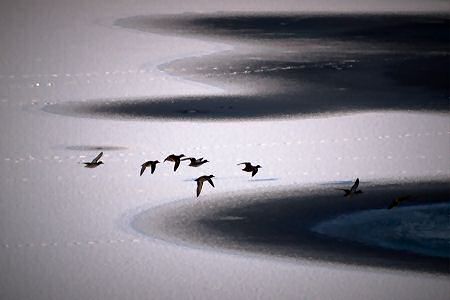As the brush cutting of the banks is now complete I have been digging out another dragonfly and amphibian pool, beside the Haven. Unfortunately some youths took exception to this and on 15th they had a go at a volunteer, who was working on his own by the Small Gravel Pit. They said the path cut their access to their favourite fishing and camping spot. The next week they set fire to the Haven, destroying a reed bed and a swan’s nest. Mark Glover has contacted a security firm to get an idea of how much it would cost for them to patrol the site. Some frogs have already spawned in the ponds that have been created.
The ‘Wader Scrape’ still has very little water in it and, on three consecutive mornings, there have been people excercising their dogs on it. They want to cross the Ouse Dyke bridge at this point rather than about a quarter of a mile further up as it is a more direct route around the reserve to the river bank.
I have been on a chainsaw course and now am qualified to prepare and maintain a chainsaw (CS30) and to fell and process small trees (CS31). The main purpose of obtaining these qualifications is to be able to remove the larger trees that are beginning to encircle the Deep Pit plus any other trees that become a problem on site. There are no large trees that we are likely to want to remove so I will not need to further pursue my chainsaw tutelage. Some trees could be dropped straight into the Deep Pit and allowed to rot there. This could create wet wood habitat which is uncommon nowadays as people tidy up dead trees that may pose the risk of blocking water courses. This habitat is valuable to several uncommon invertebrates.
I have done a survey to see how much balsam is coming up this year. So far the signs are good and very few seedlings have been found. When the plants have grown a little bit more and are easier to see I shall continue the eradication programme. The Ouse Dyke remains the source for recolonisation of the site and will also be tackled.
March has been a good month for raptors on the site, with two Rough-legged Buzzards seen on 11th, three Peregrines on15th and two Red Kites on 25th. Chiffchaffs, Blackcaps Sand Martins and Wheatears are summer migrants that have already been seen on site, the Chiffchaffs having already set up in territories.
